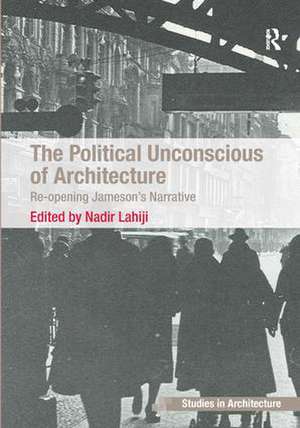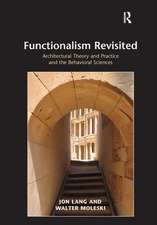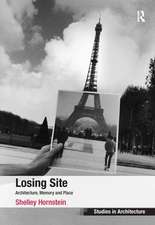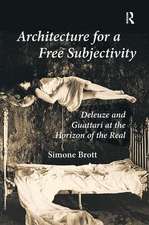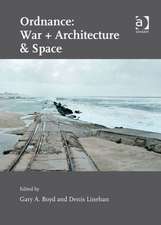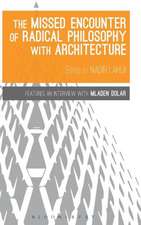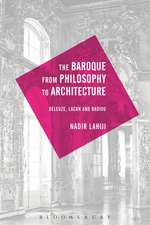The Political Unconscious of Architecture: Re-opening Jameson's Narrative
Editat de Nadir Lahijien Limba Engleză Hardback – 11 aug 2011
Preț: 827.64 lei
Preț vechi: 1144.98 lei
-28% Nou
Puncte Express: 1241
Preț estimativ în valută:
158.37€ • 165.77$ • 131.81£
158.37€ • 165.77$ • 131.81£
Carte tipărită la comandă
Livrare economică 31 martie-14 aprilie
Preluare comenzi: 021 569.72.76
Specificații
ISBN-13: 9781409426394
ISBN-10: 1409426394
Pagini: 352
Dimensiuni: 174 x 246 mm
Greutate: 0.88 kg
Ediția:1
Editura: Taylor & Francis
Colecția Routledge
Locul publicării:Oxford, United Kingdom
ISBN-10: 1409426394
Pagini: 352
Dimensiuni: 174 x 246 mm
Greutate: 0.88 kg
Ediția:1
Editura: Taylor & Francis
Colecția Routledge
Locul publicării:Oxford, United Kingdom
Cuprins
Contents: Introduction; Ban-lieues, Bechir Kenzari; The architecture of money: Jameson, abstraction and form, David Cunningham; The master's house, Donald Kunze; The stolen hope: reading Jameson's critique of Tafuri, Gevork Hartoonian; Designing a second modernity?, Hal Foster; May mo(u)rn: a site-writing, Jane Rendell; Allegories of late capitalism: Main Street and Wall Street on the map of Global Village, Joan Ockman; Rethinking city planning and utopianism, Kojin Karatani; Frederic Jameson and critical architecture, Louis Martin; Reloading ideology critique of architecture, Nadir Lahiji; A photography not 'quite right': Frederic Jameson's discussion of architectural photography in 'spatial equivalents in the world system', Robin Wilson; The architectural parallax, Slavoj Zizek; Botanizing at the Bonaventura: base and superstructure in Jamesonian architectural theory, Terry Smith; Jameson, Tafuri, Lefebvre, Xavier Costa; Index.
Notă biografică
Nadir Lahiji is an architect, critic, educator, and a theorist. He teaches architecture theory, modernity, and contemporary criticism in the intersections of philosophy, radical social theory, and psychoanalytical theory.
Recenzii
'In architectural discourse, Fredric Jameson is usually associated with his now-classic construction of the postmodern as a cultural dominant. That concept, however, is only part of Jameson's vast theoretical machinery, of which the political unconscious is the center, and in which architecture has the important social function to represent historical and technological forces that might otherwise remain undetectable. With luminous scope and impressive depth, this collection insists on the fuller significance of Jameson's thought for architecture. It is important for anyone interested in progressive thinking about cultural practices.' Michael Hays, Harvard University, USA 'This volume takes Fredric Jameson's writing as a lens through which to refocus the political stakes and purposes of architectural theory. Refusing neoliberalism's 'injunction against thought', the interventions help reinvigorate the emancipatory project.' Gail Day, University of Leeds, UK '... this publication collects under its covers an insightful and polemical contemporary overview of appropriations that Jameson’s notion of the political unconscious finds in architecture, photography and film studies.' Imaginations
Descriere
Thirty years have passed since eminent cultural and literary critic Fredric Jameson wrote his classic work, The Political Unconscious: Narrative as a Socially Symbolic Act, in which he insisted that "there is nothing that is not social and historical - indeed, that everything is 'in the last analysis' political." Bringing together a team of leading scholars this book critically examines the important contribution made by this eminent cultural and literary critic, and breaks new ground in architectural criticism, offering insights into the interrelationships between politics, culture, space, and architecture. Fredric Jameson himself provides an afterword.
